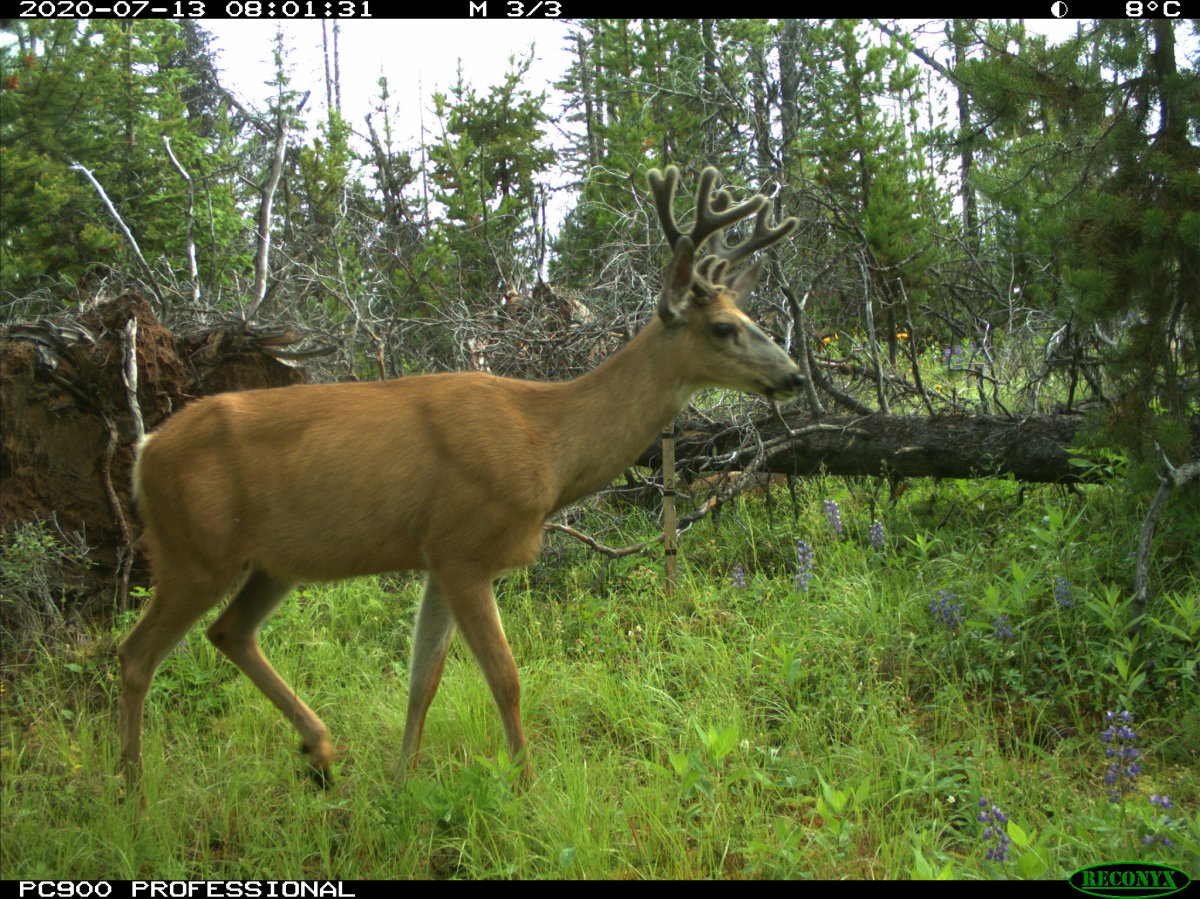Love the outdoors and wildlife and cameras and volunteering?

If so, the B.C. Wildlife Federation (BCWF) has a tailor-built role for you.
The organization is searching for volunteers who will tend to its wildlife cameras across B.C.’s Southern Interior for its ongoing mule deer study.
The BCWF says since 2019, dozens of volunteers have been taking care of 150 wildlife cameras spread across 30,000 square kilometres. The goal of the Southern Interior Mule Deer Project is to better understand the mule deer population, its health, movements and predators.
The organization says the cameras have historically been moved with the deer’s season migration habits.
“We hope to have cameras permanently installed at every research location later this year, and that will require new citizen scientists,” said the BCWF.

The organization says volunteers will spend one day a year in the backcountry, locating and servicing the cameras, changing out batteries and collecting SIM cards.

Get daily National news
Camera site co-ordinator Grant Hiebert says anyone with a backcountry road map, a GPS or smartphone, and sensible shoes can play an important role in this scientific endeavour.
“Our goal is to discover what is causing the continual decline of the mule deer population, but we are covering a vast area, from 100 Mile House in the north all the way to the U.S. border,” said Hiebert.
“We have people who do this near their homes, but other folks from the Lower Mainland do it as part of their annual fishing or hunting trip, or when they come out to visit relatives.”

The BCWF says more than 2.5 million images have been collected so far, and that the photos will determine how factors like wildfires, logging, roads and people influence the distribution and activity patterns of mule deer.
In addition to the deer, the BCWF says the cameras frequently capture images of predators such as wolves, bears and cougars, especially in areas with industrial access roads and skidding tracks leftover from logging.
“At some sites, one camera is placed in the bush, while another is placed looking over a nearby road or quad trail,” said Hiebert. “The purpose of this is to find out whether predators are successfully using human-made pathways to access their prey.”
Also, the BCWF says it’s also searching for volunteers to examine the wildlife photos.

If you’re interested in volunteering for the outdoor camera, send an email to simdeercameras@gmail.com. If you’re interested in volunteering for image analysis, send an email to samuelfoster@uidaho.edu.
- Donald Trump claims B.C.’s ‘very large faucet’ could help California’s water woes
- Canada must speed up progress to hit its 2030 emissions target: report
- U.S. TikTok ban case pits free speech vs. national security. Which will win?
- A final, tragic text from doomed Titan sub revealed at Coast Guard hearing









Comments